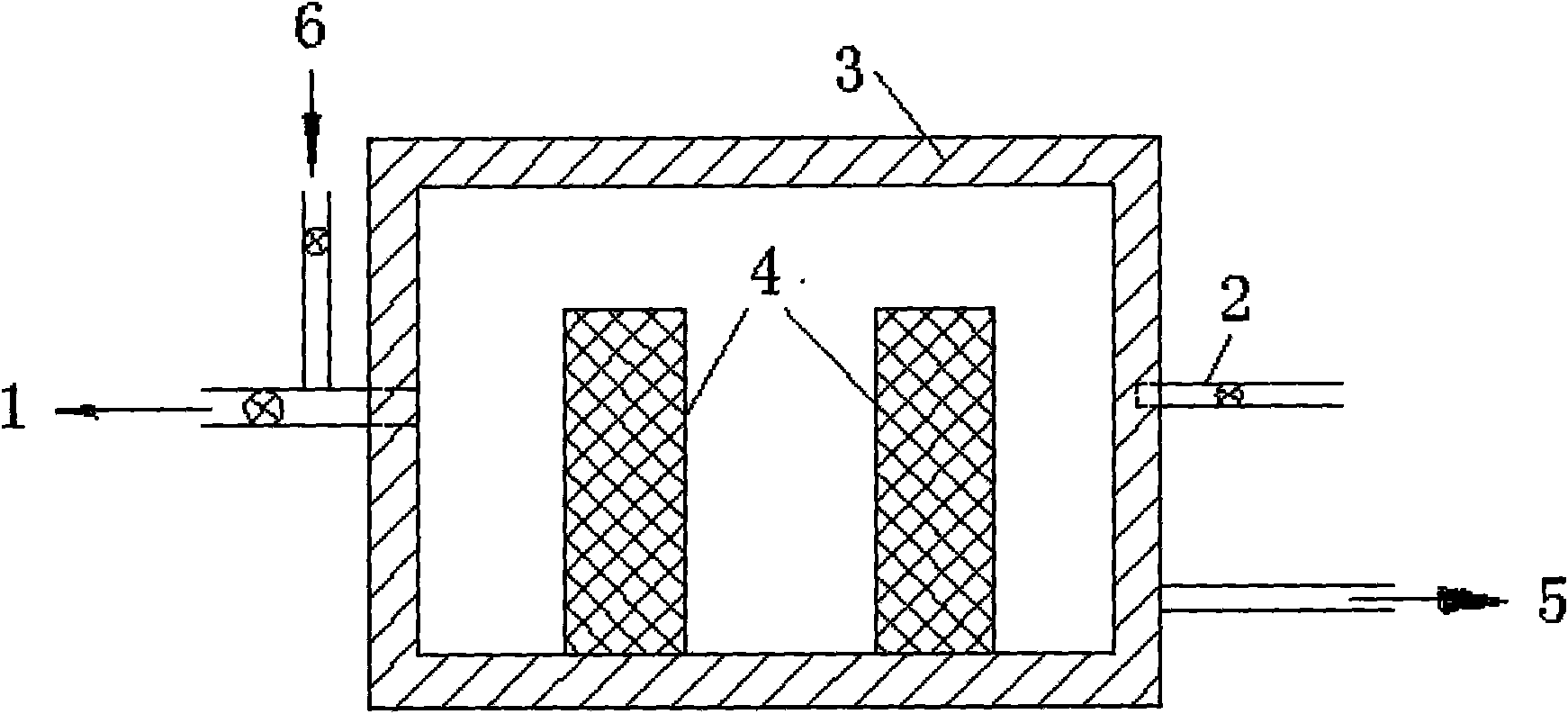Method for compactly sintering chromium oxide aggregate
A chromium oxide and aggregate technology, applied in the field of chromium oxide aggregate dense sintering, can solve the problems of flue gas pollution, difficult to control oxygen partial pressure, large energy consumption, etc. consumption effect
- Summary
- Abstract
- Description
- Claims
- Application Information
AI Technical Summary
Problems solved by technology
Method used
Image
Examples
Embodiment 1
[0027] Using pure Cr 2 o 3 Fine powder, press molding under 150MPa pressure, put into electric heating kiln, keep the pressure in the furnace greater than atmospheric pressure and not greater than 0.2atm (or keep the pressure in the furnace within the safe production range), sinter in Ar+CO atmosphere, control the kiln The partial pressure of CO in the furnace (p(CO)=0.0434atm), in the CO atmosphere maintained by carbon, sintered to obtain dense Cr 2 o 3 aggregate.
[0028] The specific operation is as follows: when sintering, first vacuumize the kiln, and fill in a proper amount of mixed gas of Ar and CO, so that the sintering furnace is in a closed state, and the pressure in the furnace is controlled not to exceed a certain value of 0.2atm. The sample is sintered at 1550°C and kept at this temperature for 2 hours to obtain a dense sintered sample. In the comparative example, the same sample was sintered at 1800°C for 3 hours in an air atmosphere (see ZL200510107260.X). ...
Embodiment 2
[0032] Using pure Cr 2 o 3 Micro-powder, press molding under 150MPa pressure, and put into electric heating kiln. Keep the pressure in the furnace not greater than 0.2atm, sinter in an Ar+CO atmosphere, control the CO partial pressure in the kiln (p(CO)=0.155atm), and sinter in a CO atmosphere maintained by carbon to obtain dense Cr 2 o 3 aggregate.
[0033] The specific operation is as follows: when sintering, first vacuumize the kiln, fill in an appropriate amount of Ar and CO mixed gas, the sintering furnace is in a closed state, and control the total pressure in the furnace to not exceed 0.2 atm. The sample is sintered at 1600°C and kept at this temperature for 2 hours to obtain a dense sintered sample. The bulk density and apparent porosity of the sintered samples are compared in Table 2.
[0034] Table 2
[0035] Bulk density / g·cm -3
Embodiment 3
[0037] Using Cr 2 o 3 Composite micropowder, its raw material composition (by mass percentage) 95% Cr 2 o 3 Fine powder, 5% nano Al 2 o 3 Micropowder, pressed at 150MPa and then loaded into an electric heating kiln, keeping the pressure in the furnace not greater than 0.2 atm, controlling the partial pressure of CO in the kiln (p(CO) = 0.081 atm), and sintering in a carbon-maintained CO atmosphere to obtain densification High chromium aggregate.
[0038] The specific operation is as follows: vacuumize first during sintering, and then fill with Ar+CO mixed gas. The sintering furnace is in a closed state, and the pressure in the furnace is controlled to be no more than 0.2 atm. Sinter at a temperature of 1500°C and keep at this temperature for 2 hours to obtain a dense sintered sample. The bulk density and apparent porosity of the samples after sintering are shown in Table 3.
[0039] table 3
[0040] Bulk density / g·cm -3
PUM
| Property | Measurement | Unit |
|---|---|---|
| Bulk density | aaaaa | aaaaa |
| Bulk density | aaaaa | aaaaa |
Abstract
Description
Claims
Application Information
 Login to View More
Login to View More - R&D
- Intellectual Property
- Life Sciences
- Materials
- Tech Scout
- Unparalleled Data Quality
- Higher Quality Content
- 60% Fewer Hallucinations
Browse by: Latest US Patents, China's latest patents, Technical Efficacy Thesaurus, Application Domain, Technology Topic, Popular Technical Reports.
© 2025 PatSnap. All rights reserved.Legal|Privacy policy|Modern Slavery Act Transparency Statement|Sitemap|About US| Contact US: help@patsnap.com

